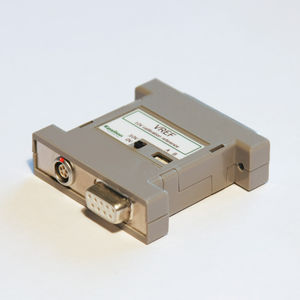
- Detection - Measurement
- Electrical Measurements
- Extensometer calibrator
- Epsilon Technology
Extensometer calibration system ESCS
Add to favorites
Compare this product
Characteristics
- Applications
- extensometer
Description
Designed to allow Epsilon’s extensometer calibration to be easily transferred to a customer’s electronics, the Epsilon Shunt Calibration System is available for any strain-gaged extensometer.
What is shunt calibration?
The Epsilon Shunt Calibration System provides an easy way to calibrate an extensometer and signal conditioning electronics without using a mechanical calibrator. Shunt calibration enables performing on-site electrical calibration with nearly all types of controllers and electronics. It also makes it easy to periodically “spot check” the calibration of the electronics, which will help ensure that the extensometer and electronics are calibrated correctly.
Note that the Epsilon Shunt Calibration System does not replace the need for on-site verification using a mechanical extensometer calibrator. On-site verification is required by many labs and testing standards.
Which extensometers include the Epsilon Shunt Calibration System?
The Epsilon Shunt Calibration System is included with every new Epsilon strain-gaged extensometer. Customers who would like Epsilon to add the Epsilon Shunt Calibration System to an existing extensometer that does not have it can send the extensometer to Epsilon for re-calibration. Epsilon will install the Epsilon Shunt Calibration System, perform a calibration, and return the retrofitted extensometer with a new Epsilon Test Certificate.
How does shunt calibration work?
The Epsilon Shunt Calibration System is used for two-point calibrations.
The first point is the extensometer’s gauge length.
Catalogs
Model ESCS
1 Pages
Extensometer Catalog version 110.2
136 Pages
*Prices are pre-tax. They exclude delivery charges and customs duties and do not include additional charges for installation or activation options. Prices are indicative only and may vary by country, with changes to the cost of raw materials and exchange rates.





